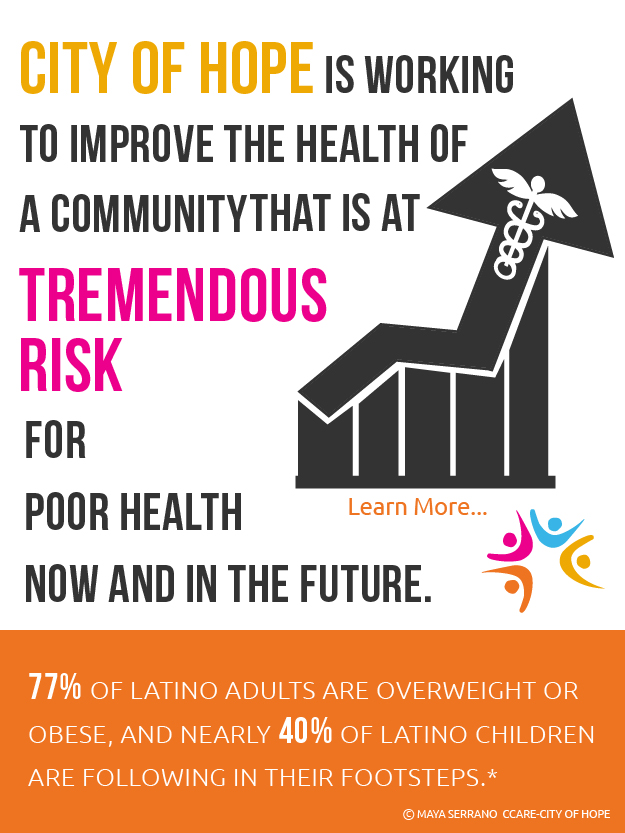
A Healthy Pregnancy Diet, Latino Style
10/22/2015 12:00PM | 14665 viewsHispanic families have changed, but taking care of la familia is still the priority of busy Latina moms. Adapted from Waiting for Bebé: A Pregnancy Guide for Latinas, by Lourdes Alcañiz
Eat well – but how?
You probably already know how important it is to have a healthy diet during pregnancy. Eating well is essential for both you and your baby because your baby gets nourishment from what you eat.
But what is a healthy diet? How many fruits and vegetables should you eat every day – and what kind? Can you eat any sweets or fats?
We suggest an approach that will help you make healthy food choices during pregnancy (and beyond) and enable you to monitor what you eat easily and efficiently. This method is based on the diets followed by people with diabetes, to keep their condition in check, but it's useful for anybody who wants to eat nutritiously.
Certain ethnic groups that have a high risk of diabetes, including Hispanics, are more likely to develop gestational diabetes. But by following the guidelines below and getting regular exercise (check with your doctor first), you can keep your weight gain in check and help prevent this condition.
You'll also want to take a look at our extensive list of foods from a typical Latino diet. The list includes portion sizes to help you make these delicious foods part of your healthy diet during pregnancy.
Calories
In the Latino culture, there's a widespread belief that when you're pregnant, tienes que comer por dos: You have to eat for two.
But healthy eating during pregnancy doesn't mean eating many more calories. Instead, it means eating "a little of everything" – that is, eating reasonable portions from all the food groups.
How many more calories do you need during pregnancy? The number averages around 300 additional calories a day, but it will vary based on how far along you are in your pregnancy. Your body needs extra calories depending on how fast your baby is growing – and this changes as time goes by. Your activity level also affects how many calories you'll need.
Your total calorie intake should depend on how much you weigh, how old you are, your weight gain goal, and how active you are. For example, a woman who is 5 feet 4 inches tall and weighs 126 pounds before pregnancy and who does less than 30 minutes of moderate exercise a day needs 2,000 calories per day in her first trimester, 2,200 calories per day in her second trimester, and 2,400 calories per day in her third trimester.
Discuss your weight gain goal and calorie needs with your healthcare practitioner or a registered dietitian. You can also go to mypyramid.gov to find an interactive food-pyramid plan for pregnancy. Your calories should come from a variety of foods from the following food groups.
The food groups
Foods are divided into three broad categories, according to how the body uses them: carbohydrates (sometimes referred to as starches), protein, and fat.
Many foods belong to more than one of these food groups. For example, an avocado supplies carbohydrates, but most of its calories come from fat. And beans, which are considered complex carbohydrates, are also a good source of protein.
Carbohydrates (Starch)
Your body breaks down carbohydrates into glucose to get the energy it needs to move and perform daily activities. Fruits, vegetables, grains, and legumes (beans) all belong to this group. Milk also contains carbohydrates.
There are two kinds of carbohydrates: simple and complex.
Simple carbohydrates enter your bloodstream relatively quickly because they're refined, so your body doesn't need to work as hard to break them down.
White flour and sugar (both natural, like that found in fruit, and refined) and all the food made from them – such as white bread, flour tortillas, pasta, cola, fruit juice, sweetened beverages, and sweets – belong in the category of simple carbohydrates.
If you have high blood sugar, be wary of simple carbohydrates, since they can quickly raise your glucose level. Pregnant women are particularly sensitive to eating simple carbs in the morning, so you may want to put off eating these foods until late morning or afternoon.
Complex carbohydrates are also converted into glucose, but because they aren't refined, it takes longer for your body to break them down, so your blood sugar level doesn't rise as fast.
Vegetables, legumes, and whole grains are all considered complex carbohydrates. Vegetables like corn, pumpkin, and potatoes are "starchy vegetables." They contain more carbohydrates than other vegetables, which means the body gets more energy from them.
Nonstarchy vegetables, like green beans, carrots, lettuce, broccoli, tomatoes, and summer squash, contain fewer carbohydrates – and create less glucose – than potatoes or bread. These unrefined foods contain plenty of vitamins, minerals, and fiber, so they're very good for you during pregnancy.
Protein
Protein is necessary for creating new tissue and repairing existing tissue. It's important to eat plenty of protein during pregnancy, to promote the healthy growth of your baby. Protein is found in meat, fish, poultry, eggs, beans, nuts, soy, and dairy products.
Fat
Your baby needs fat for development, and you need it to stay healthy. But some fats are considered better for you than others.
For example, vegetable fat (such as olive oil) and the fat in fish (like salmon) is better for your health than the saturated fat found in other animal products and the trans fat found in some baked goods and fried foods. It's a good idea to eat fat in moderation, because it's high in calories and could lead to unnecessary weight gain.
Servings
Food is measured in servings, so you can easily know how much to eat. How much food makes up a serving depends on the type of food.
For example, 1/2 cup of black beans (which are legumes) is one serving of protein and one serving of carbohydrates (starch). And 6 ounces of plain yogurt is one serving of carbohydrates (milk/yogurt).
The following are equal to one serving:
Carbohydrates
Starches: 1/2 cup lentils, refried beans, or other legumes; 1/3 cup pasta or rice; 3/4 cup flake cereal; 1/2 cup hot cereal; 1/2 cup starchy vegetables like corn or potatoes; 1 piece of bread; 1 6-inch corn or flour tortilla; 6 saltine crackers; 3 cups popcorn
Fruit: 1/2 cup or 1 small piece fresh fruit
Milk and yogurt: 1 cup unsweetened milk or soy milk; 6 ounces plain or sugar-free yogurt
Vegetables: 1 1/2 cups raw or cooked vegetables; 2 cups leafy greens
Protein
1 ounce meat or fish; 1/2 cup legumes; 1 ounce cheese; 1 ounce nuts or seeds; 1 tablespoon nut butter; 1 egg or 2 egg whites
Fat
1 teaspoon oil, butter, or mayonnaise
These serving sizes are based on "diabetes exchange lists," the basis of a meal planning system from the American Diabetes Association and American Dietetic Association, and are slightly different from serving sizes listed on mypyramid.gov.
Here are some healthy choices during pregnancy:
Starches: Legumes/beans; whole grain breads, pastas, and cereals; brown rice; corn or whole grain tortillas or wraps; whole-grain crackers, sweet potatoes, winter squash
Vegetables: All types, preferably green leafy vegetables and yellow, red, or orange vegetables. Tomatoes and chiles – Latino favorites – are especially rich in nutrients!
Fruits: All kinds, especially those that are high in vitamin C, such as strawberries, guava, papaya, oranges, mango, kiwi, and grapefruit
Milk and yogurt: Low-fat or skim milk, and milk-based products such as plain or sugar-free yogurt
Meat and meat substitutes: Lean beef, pork, and lamb; shellfish and fish (especially those from cold water, which are high in omega-3 fatty acids); eggs; legumes; nuts; seeds; nut and seed butters; low-fat cheese
Fats: Olive and canola oil; trans-fat-free margarine, butter, and mayonnaise; avocado; olives; salad dressing; nuts and seeds (in small quantities)
Your pregnancy diet
You have a wide range of foods to choose from to create your pregnancy menus, including many ingredients used in a typical Latino diet.












Post your Comment
Please login or sign up to comment
Comments